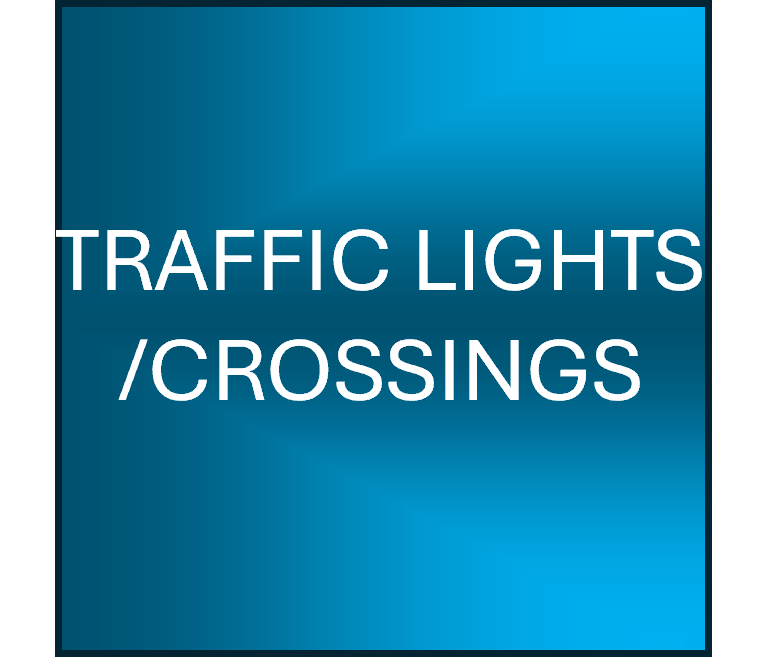
Traffic lights and crossings

Traffic lights and crossings

Generally designed as a pedestrian crossing. Initially these were designed with a timer that was set dependant on the level of footfall at the lights. Out of all the crossing lights the Pelican lights were the only ones that flash the AMBER lamp after a certain period of time. This was to allow driver's to continue with their journey if the crossing was clear. However, while the amber light was flashing the priority for the crossing ALWAYS remains that of the pedestrians or users of the crossing as they are the most vulnerable.
Pelican lights generally are being phased out and being replaced with Puffin Crossing lights instead.
Those that remain are being adapted to sensors instead of timers, so that as soon as the crossing is clear then the lights will go back to green.
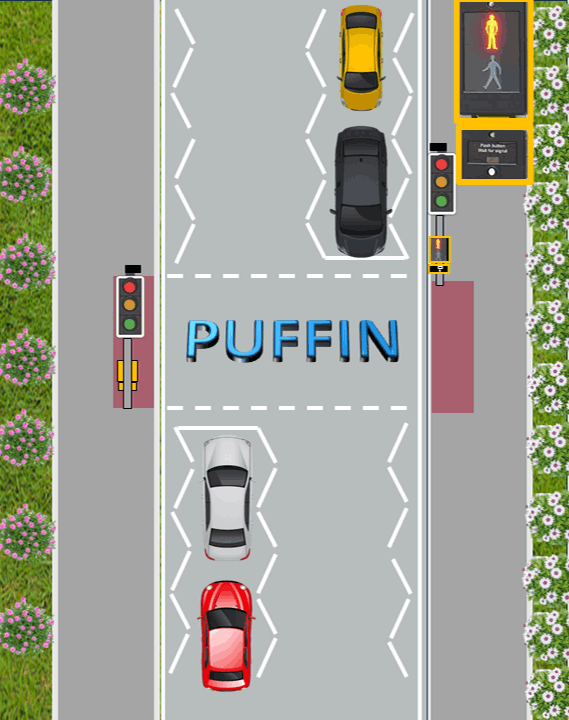
Puffin Crossings generally as with Pelican crossing were designed for pedestrians, however, cyclists use them as well. As technology advances so does the technology to these lights. In the past, people could push the button to activate the lights and run off or cross the road before the lights even changed. The lights would then change with no one present at them. Technology has now added sensors to the activation buttons so that they detect if anyone is waiting to cross. If there is no one there the lights will deactivate the initial activation and reset.
Sensors on top of the lights also detect people on the crossing and will work to a certain time setting, however, if the crossing is cleared before the time ends, the sensors will detect this and change the lights sooner.
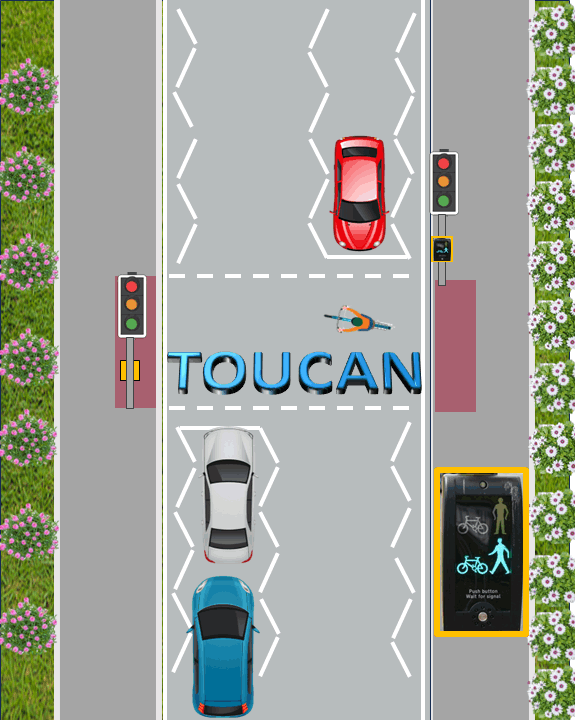
TOUCAN (taught to learners for their revision for the theory test as "TWO CAN".
TWO CAN because they are designed for Pedestrians and Cyclists.
They work in the same manner as the Puffin crossings, but on roads that carry a lot of cyclists, there are additional lights halfway down the light pole to signify to cyclist when they can go. They have their own set of lights!
This is to allow Cyclist a little bit of time to get going before the vehicles move off.
This is a great safety feature to avoid incidents happening from cyclist who may wobble to get going.
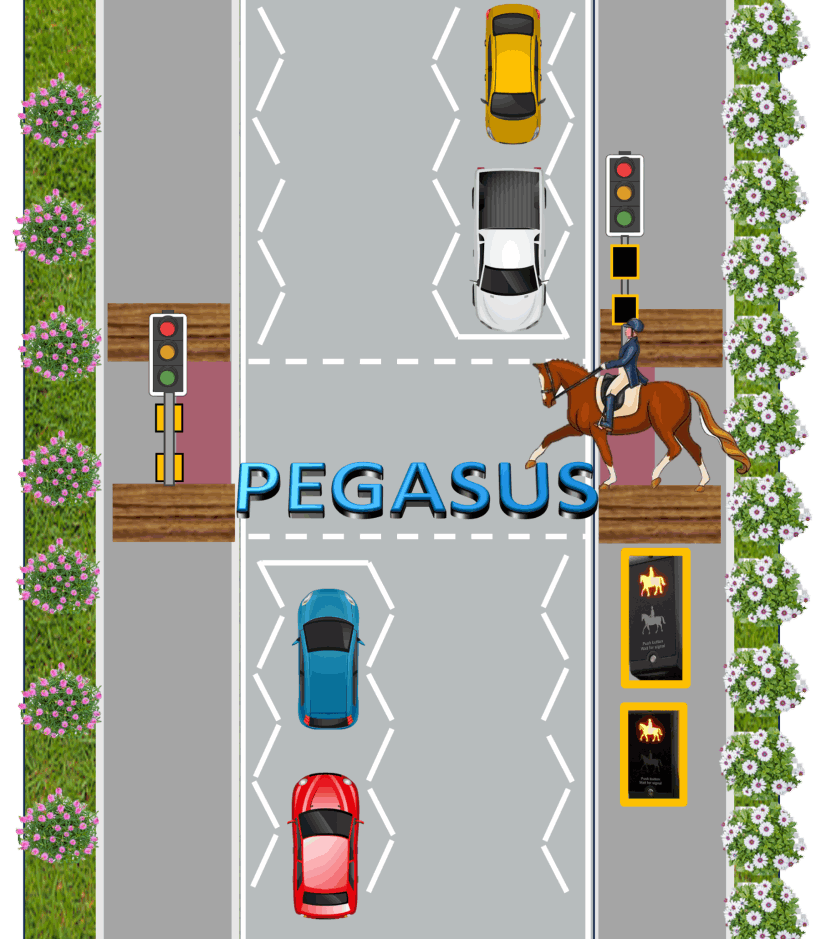
Again, a crossing designed for more than just pedestrians. These are specifically designed for Horses and their riders. The crossing is substantially wider than that of traditional crossings so that horses have less chance of being spooked by vehicles.
There are 2 activation buttons for the lights, one is set at standard height for pedestrians, the other is set at a height that should avoid rider's having to dismount.
Cyclists can also use these crossing but there are not an additional set of lights fitted to them for the cyclists.
Sensors as with the toucan and puffing crossings are fitted to detect when the crossing is clear.
Drivers, especially those at the stop line should consider switching off their engine when horses are crossing whil the are waiting at the lights to reduce spooking the horse.
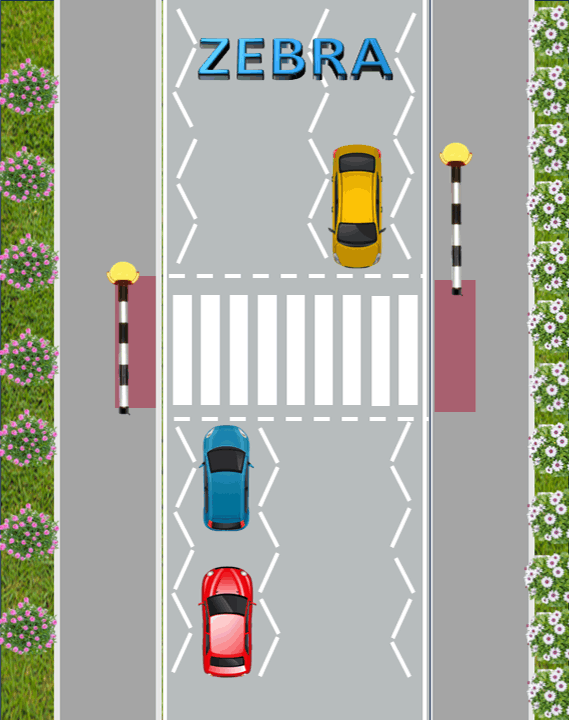
Zebra Crossing were the first addition to roads to assist pedestrians to help them cross the road in a safer manner.
Belisha Beacons placed on the pavement were there to highlight to driver's that there was a crossing coming up.
Pedestrians are still the most vulnerable of all road users. Rules applying to Zebra crossings are that vehicles should be prepared to stop on approach. Any pedestrian that places a foot onto the road at a Zebra crossing has priority over vehicles. Always be prepared to stop if a pedestrian is close to the crossing as they can just walk straight onto the crossing without even looking. For non-centre island crossings, you should wait until the pedestrian has completely crossed before proceeding. Rules on Zebra crossings changed in 2022 with the introduction of the Hierarchy of road users act.
If you see Belisha Beacons at any stage of a drive, ALWAYS proceed toward them with caution, sometimes there are hidden alleyways or bushes with gaps in them that pedestrians can just appear from.


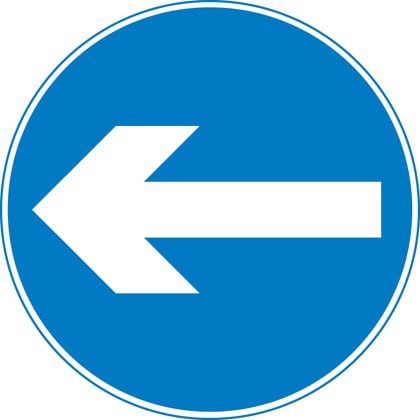
As shown in the pictures some lights may inform that a no left or right turn may be in place or the you must travel in the direction as shown.
If lights have a 4th lamp either below the green or to the sides of it, there will usually be a priority signal in use giving drivers of the direction shown priority over other traffic when illuminated.